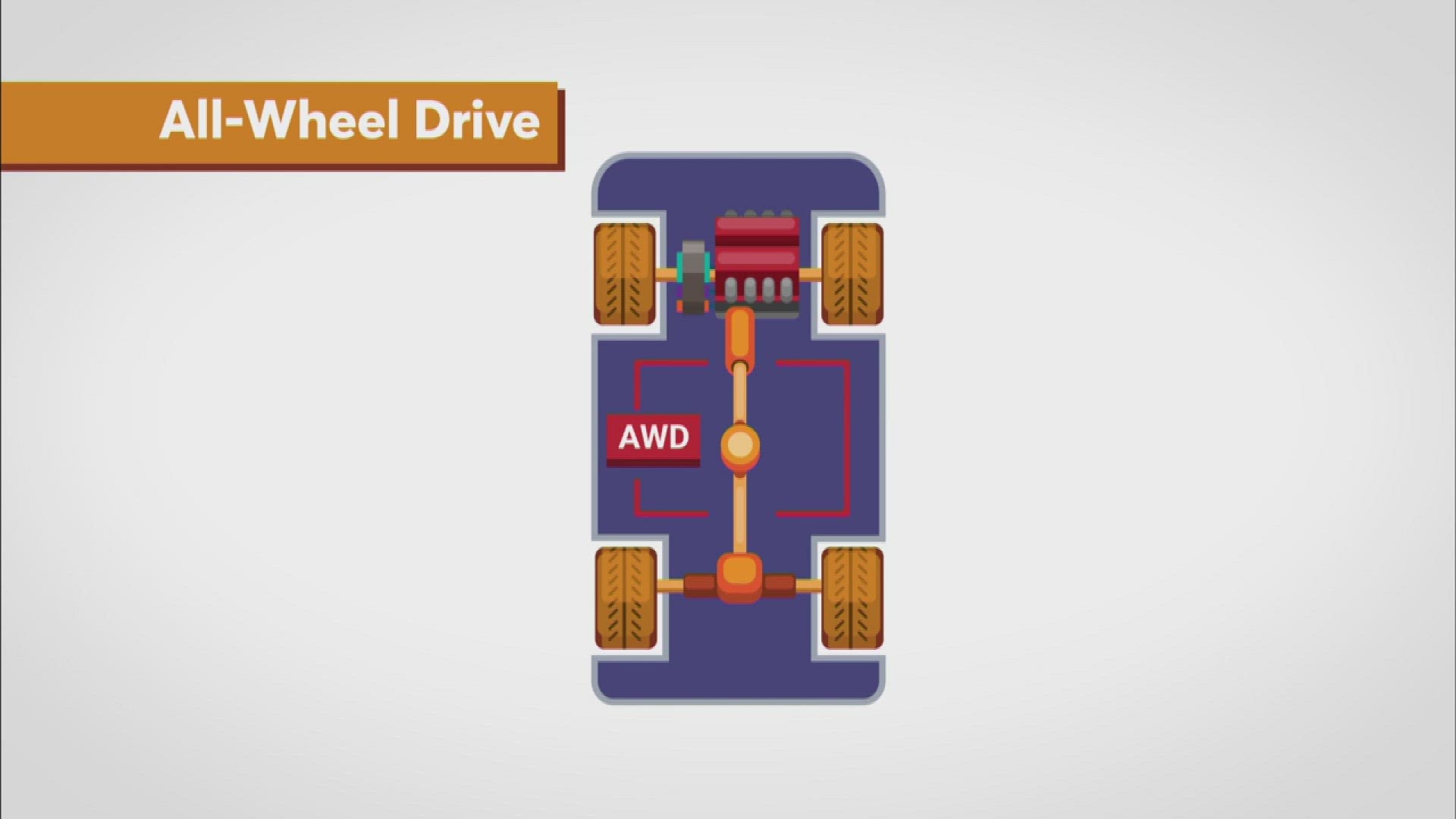GREENSBORO, N.C. — Does it seem like most new cars are sold with all-wheel drive? You’re not wrong. More than half of new cars come with it. But drivers beware.
Consumer Reports says you should know that not all vehicles with all-wheel drive are alike. For example, Subaru’s AWD system always directs at least some of the engine’s power to the rear and can direct a larger amount if needed. That’s not the case for every AWD.
"There are cost-effective or different ways of doing this, where maybe the car is primarily driven as front-wheel drive. The front wheels are getting most of the power all the time and only in certain situations will it send power to the rear wheels," said Alex Knizek, Consumer Reports.
So yes, there are more AWD cars on the road nowadays, thanks to technology. This transfer of power happens with a mechanical driveshaft running the length of the car. However electric vehicles and some hybrids use individual motors at each axle with no physical connection between them.
"With a hybrid vehicle like one from Toyota, for example, they take an electric motor and just put it at the rear, and that’s what’s giving you all-wheel drive, right? So they don’t have to change much from the regular car to enable all-wheel drive," said Knizek.
By the way, all passenger vehicles sold in the U.S. since the 2012 model year come equipped with electronic stability control, which, along with traction control, significantly improves road-holding capabilities, regardless of the drive wheels.
So who needs AWD?
"It’s people who live in snowy areas or those who experience a lot of slippery road conditions, including things like a steep driveway that’s often wet, snowy, or covered in ice," said Knizek.
Remember, AWD is not a replacement for good tires. And in really snowy conditions, that means snow tires. Poor tires on an AWD car will still struggle to provide enough grip on slippery roads.

